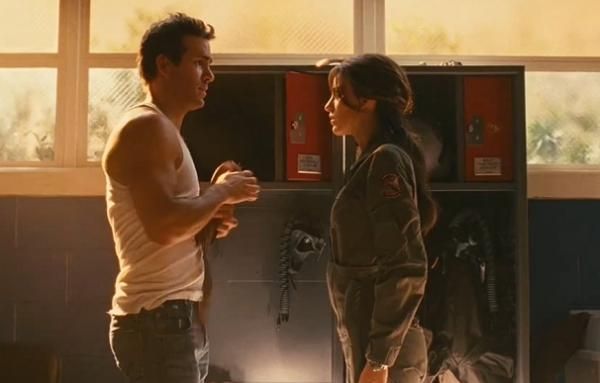Modern Test Pilots Need Warrior Discipline and Geek Smarts

In the pop culture realm, depictions of test pilots such as the fictional Hal Jordan of the superhero film "The Green Lantern" can make them seem like cocky daredevils flying on the edge of control. In reality, the pilots who take $100 million fighter jets out for flight tests must show extreme discipline and earn strong geek credentials so that they can talk shop with the engineers.
Far from being happy-go-lucky rogues who pull stunts on a whim, modern test pilots must work well with a team that includes engineers and technicians. That means flight testing is a team sport and test pilot candidates must "play well together" with others, said Col. Noel Zamot, commandant of the U.S. Air Force Test Pilot School at Edwards Air Force Base in California.
"The test pilot is someone who is passionate about flying, very intelligent, very well educated and –probably the most important quality – they're intellectually curious," Zamot told InnovationNewsDaily. "I hate to put a damper on our superheroes if they're the macho types."
That doesn't mean the comic book writers of "Green Lantern" don't do their homework; one even visited the Air Force Test Pilot School about five years ago. Besides, the pop culture image of test pilots may also come from the romanticized era of early aviation.
The line between risk and safety
Some "cowboy stuff" existed among test pilots during the two World Wars and the early part of the Cold War, said Gregory Lewis, director of the civilian National Test Pilot School in Mojave, Calif. But he added that flight test programs no longer tolerated such behavior as the price tags for more technologically sophisticated aircraft soared.
"I remember when a Grumman X-29 pilot did barrel roll on one of the early flights [in the 1980s] and got grounded by the program," Lewis said. "Whereas Chuck Yeager [who broke the sound barrier in 1947] did it in the X-1 and everybody just said, 'Wow, that was neat.'"
Sign up for the Live Science daily newsletter now
Get the world’s most fascinating discoveries delivered straight to your inbox.
When an aircraft that cost tens or hundreds of millions of dollars crashed, it not only represented a loss of taxpayer dollars, but also posed a huge cancellation risk to entire programs due to negative publicity, Lewis said. As the American public and Congress began paying more attention to such accidents in the 1960s, the U.S. military and defense companies overhauled safety measures to minimize flight testing risks.
The human cost from the past is also still on the minds of test pilots today. More than 100 pilots died in accidents at Edwards Air Force Base even before the Air Force officially became a separate military service in 1947.
"A lot of lessons we've learned have been paid in blood," Zamot said. "We've built upon sacrifices of those before us and learned."
Center of the geek universe
The advance of technology in modern aircraft has meant that today's test pilots need much more academic preparation, Zamot said. People who graduate from the Air Force Test Pilot School get a Master's degree in flight test engineering, which simply didn't exist in the early days.
Some countries also make their test pilots pass psychological tests. But the U.S. military does not because test pilot candidates have already "run through so many wickets beforehand," Zamot explained.
The typical combat-ready pilot of an F-16 fighter jet must pass through a year of flight school, four years of officer training, evaluations, medical tests and security clearances. Of those, only the best even apply to Test Pilot School.
Despite changes in flight testing programs, the love of the job has remained the same. Being head of the Air Force Test Pilot School is "the absolute, no-holds-barred coolest job in the Air Force," Zamot said. He also praised the energy and talent among both students and flight instructors.
"This is the only place where you can go fly a jet and then come have a discussion about quantum mechanics or higher-order math, and people will get it," Zamot said. "If you are intellectually curious and interested in airplanes, this is the center of the universe."
This story was provided by InnovationNewsDaily, a sister site to Live Science. You can follow InnovationNewsDaily senior writer Jeremy Hsu on Twitter @ScienceHsu. Follow InnovationNewsDaily on Twitter @News_Innovation, or on Facebook.











